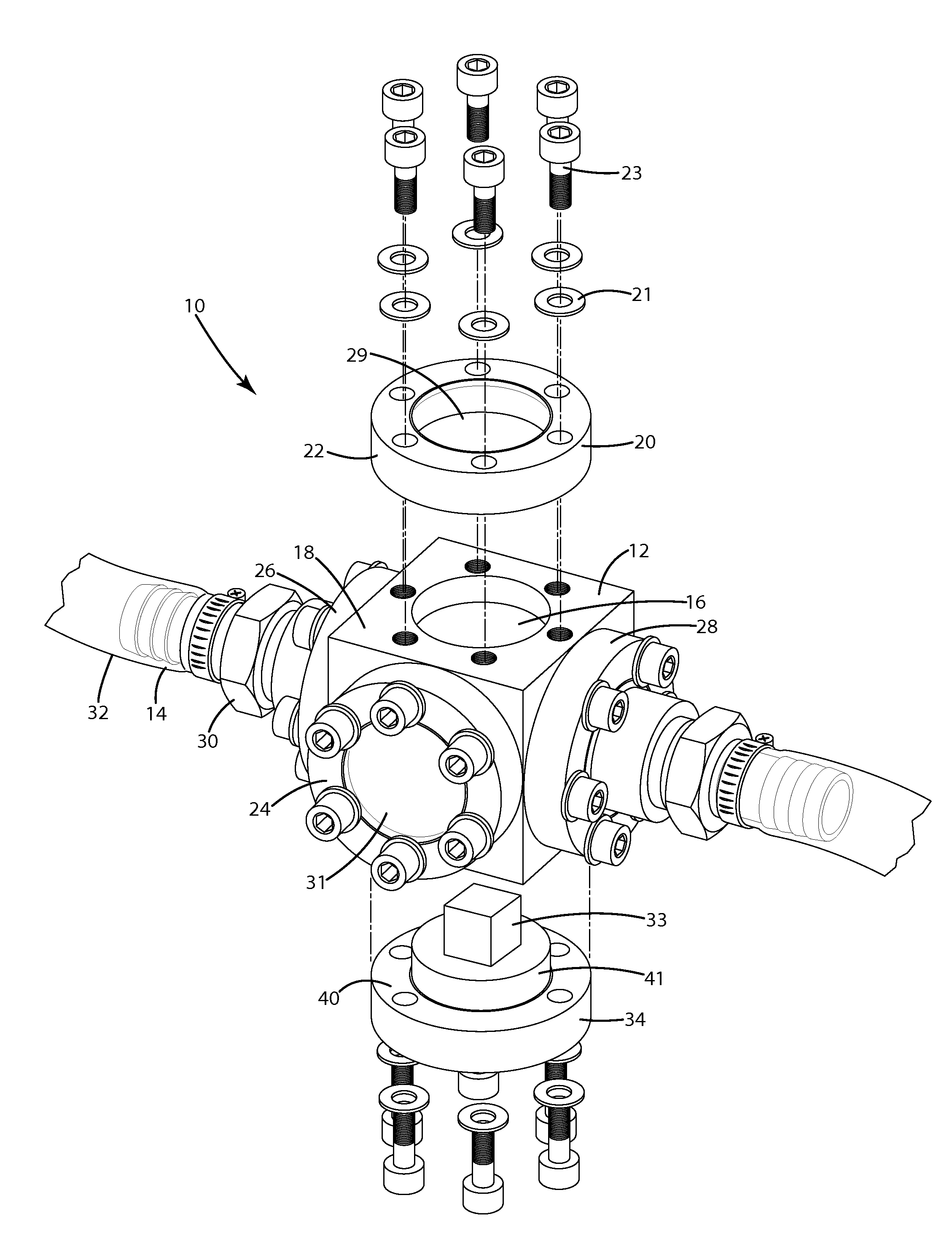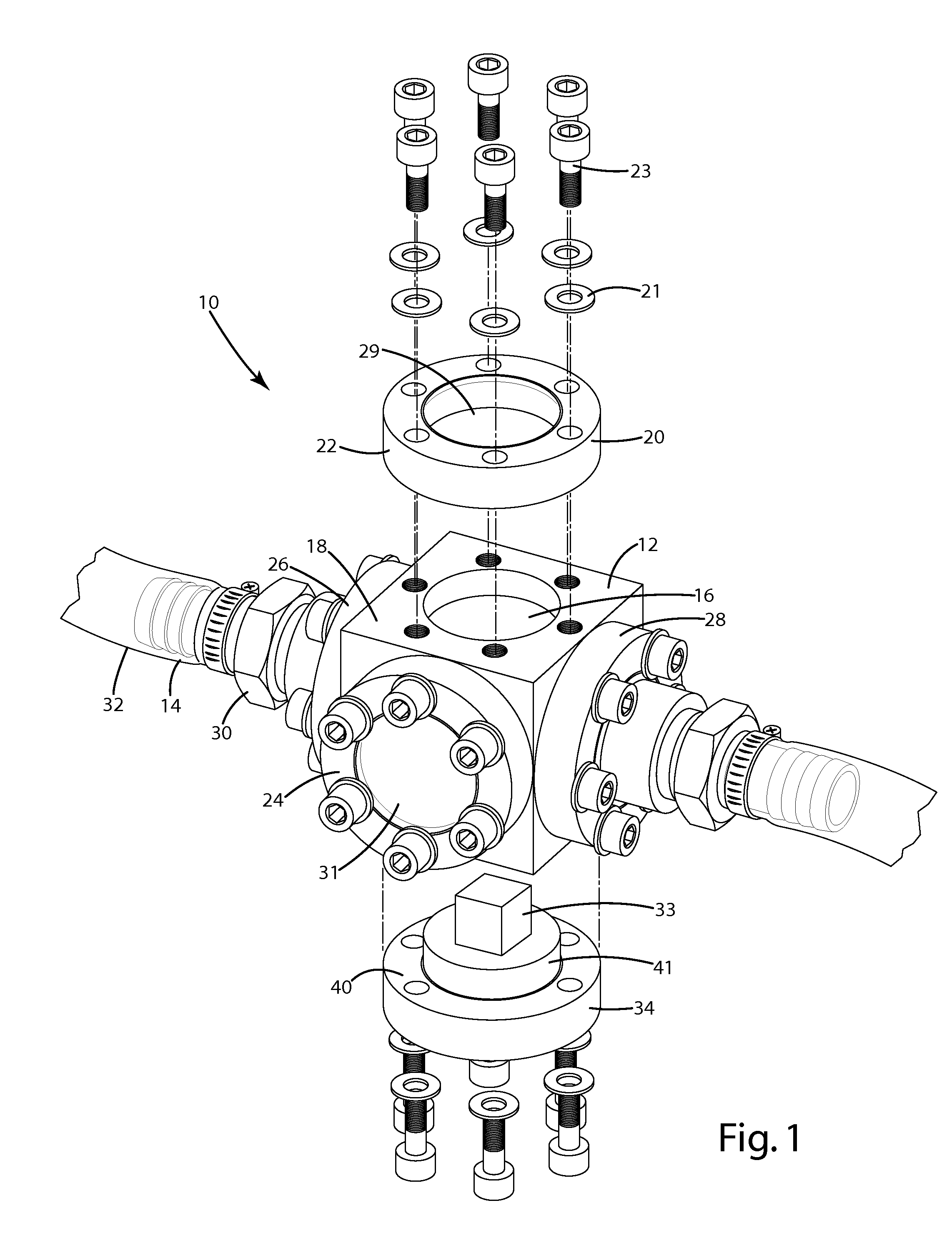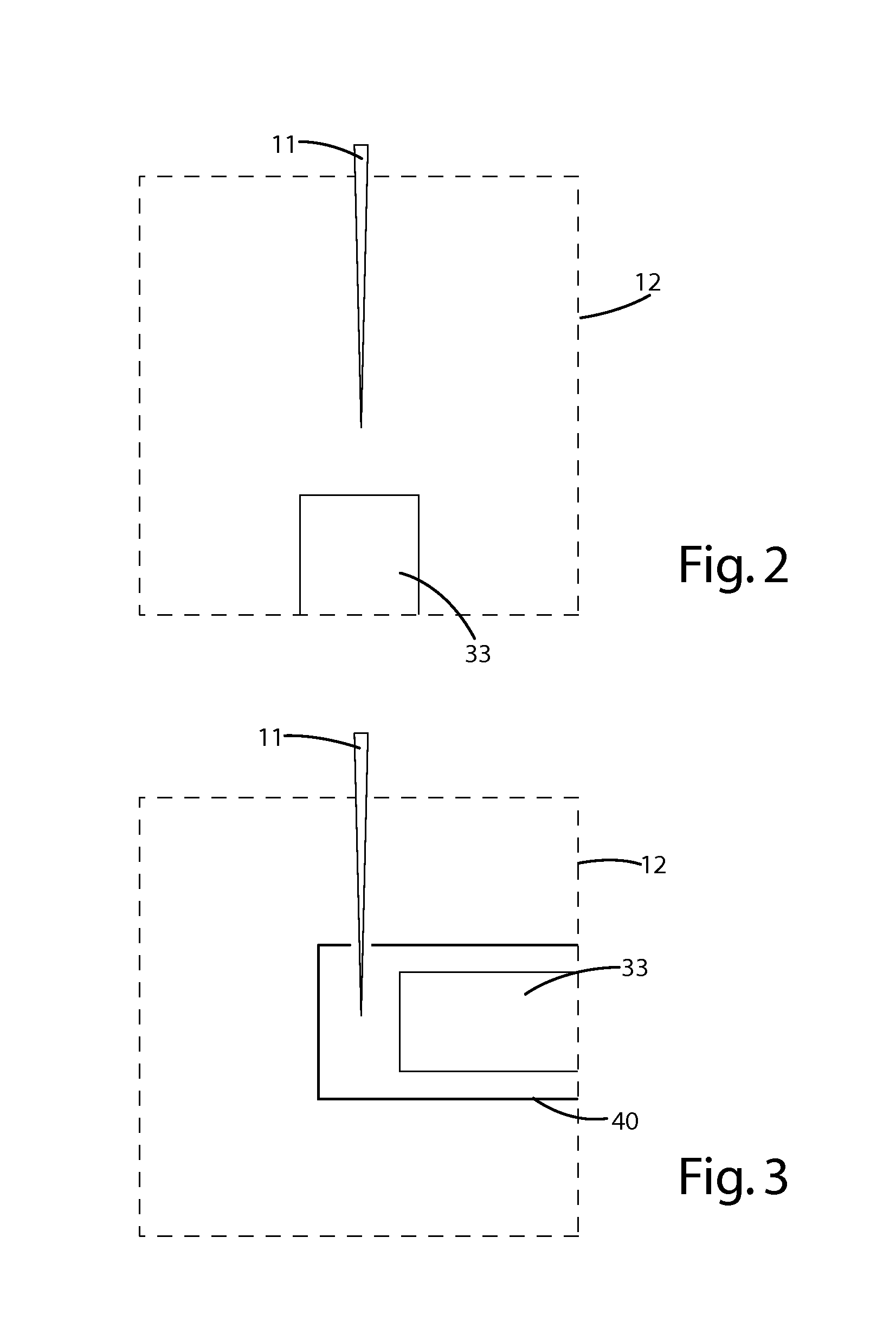Repetitive pressure-pulse apparatus and method for cavitation damage research
a cavitation damage and pressure-pulse technology, applied in the field of cavitation damage research, can solve problems such as cavitation damage on the surface of test specimens, and achieve the effect of accurate imitation of cavitation
- Summary
- Abstract
- Description
- Claims
- Application Information
AI Technical Summary
Benefits of technology
Problems solved by technology
Method used
Image
Examples
Embodiment Construction
[0027]A system for generating cavitation and cavitation damage on a test sample is shown in FIG. 1 and generally designated 10. In one embodiment, the system includes a cavitation chamber 12 and a liquid system 14 connected to the cavitation chamber 12 for circulating a media, such as water, through the chamber 12. As shown, the cavitation chamber 12 is a 1⅓ inch cube made of stainless steel. There are openings 16, each about ⅝″ in diameter, on each of the six sides 18 of the cube. In one embodiment, six stainless steel cylindrical-end disks 20 coupled with copper washers 21 are used to seal the openings 16 in the cube to form the cavitation chamber 12.
[0028]The top end disk 22 of the chamber 12 may include a transparent quartz window 29 for laser passage and the front end disk 24 may include a glass viewport 31 to enable viewing of the interior of the chamber 12. The left 26 and the right 28 end disks may include fitting nozzles 30 connected to water tubing 32. The bottom end disk ...
PUM
| Property | Measurement | Unit |
|---|---|---|
| frequency | aaaaa | aaaaa |
| wave length | aaaaa | aaaaa |
| Power | aaaaa | aaaaa |
Abstract
Description
Claims
Application Information
 Login to View More
Login to View More - R&D
- Intellectual Property
- Life Sciences
- Materials
- Tech Scout
- Unparalleled Data Quality
- Higher Quality Content
- 60% Fewer Hallucinations
Browse by: Latest US Patents, China's latest patents, Technical Efficacy Thesaurus, Application Domain, Technology Topic, Popular Technical Reports.
© 2025 PatSnap. All rights reserved.Legal|Privacy policy|Modern Slavery Act Transparency Statement|Sitemap|About US| Contact US: help@patsnap.com



